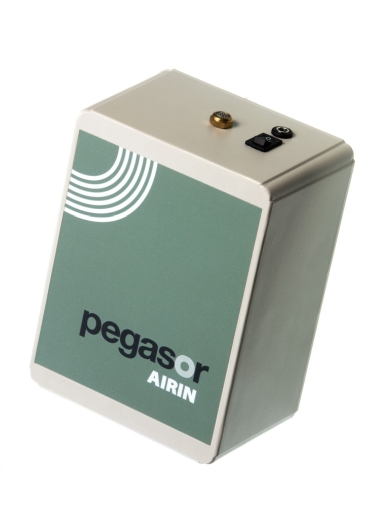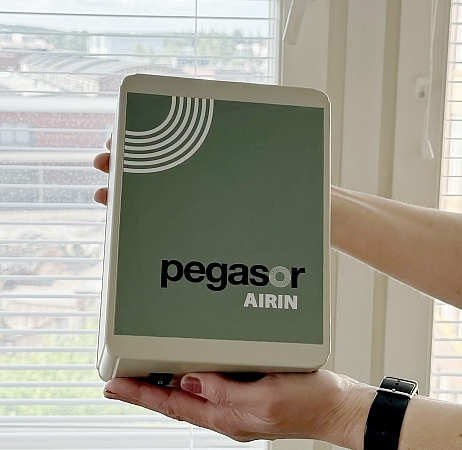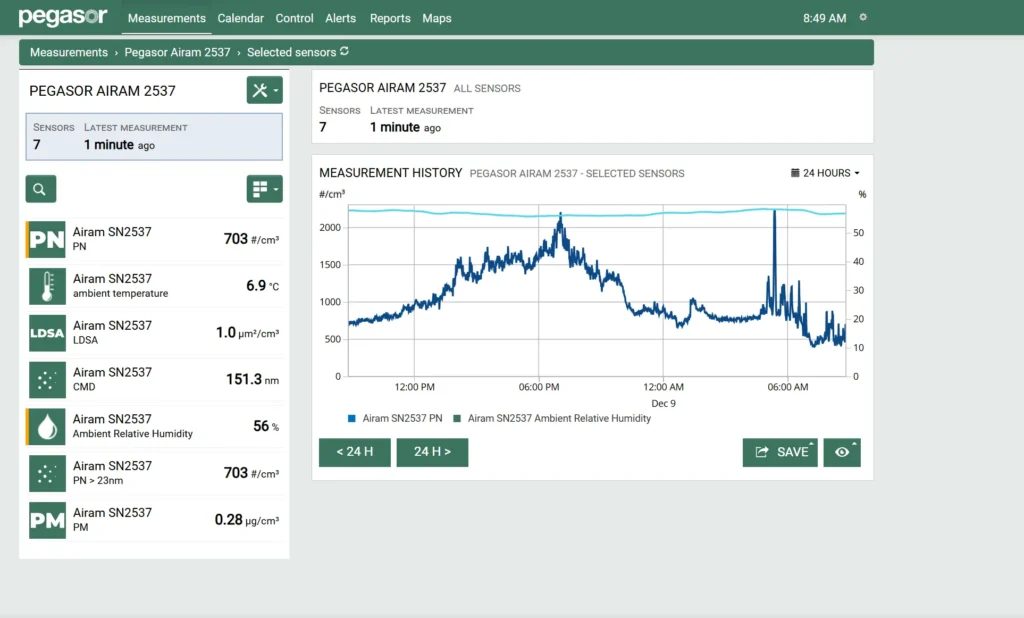Pegasor Airin

Pegasor Airin is a compact standalone monitor for monitoring ultrafine particles in indoor environments. The Airin unit uses the Pegasor PPS-G2 sensor for real-time measurement of particle number (PN), lung deposited surface area (LDSA), particle mass (PM) concentrations and also particle size. The Pegasor Airin is an ideal tool researchers, occupational hygienists, or anyone concerned about healthy indoor air to monitor ultrafine particle concentrations as recommended by the WHO (global air quality guidelines 2021).
The Pegasor PPS-G2 sensor operation is based on the unique Pegasor technology that combines diffusion charging with the “escaping current” technology. With this method, particles flow through the sensor and are not collected inside the system, making the maintenance intervals extremely long, even up to years in air quality monitoring applications. Furthermore, the system includes an extensive self-diagnostics and can be paired with an optional cloud service, ensuring reliable operation even in remote locations.
Features
Continuous & real-time monitoring of UFP
- PN, LDSA, PM and particle size detection in one system
- Plug and play design for easy operation
- SD card, Ethernet connection with Modbus logger
- Cloud service for remote data monitoring
Minimal maintenance and carefree operation
- Unique flow-through designs ensures long-term maintenance free operation
- No filters to change, no working fluids to play with
- Integrated pump included for sensor operation, no external pumps or air compressors needed
- No moving parts, robust and reliable construction
Proven scientific performance
- High dynamic measurement range
- Detects the most harmful ultrafine particles
- Repeatable, linear, efficient response

Pegasor Cloud Portal

Pegasor Cloud Portal is an optional online service for monitoring data from one or more Airam or Airin units. This cloud based system is an easy way to monitor the measured data and instrument operation remotely, and create reports for more detailed analysis. Pegasor cloud portal allows multiple units to be connected to the service at any given time.
Download
Download Pegasor Airin brochure
User manual and more availabe in customer area here.